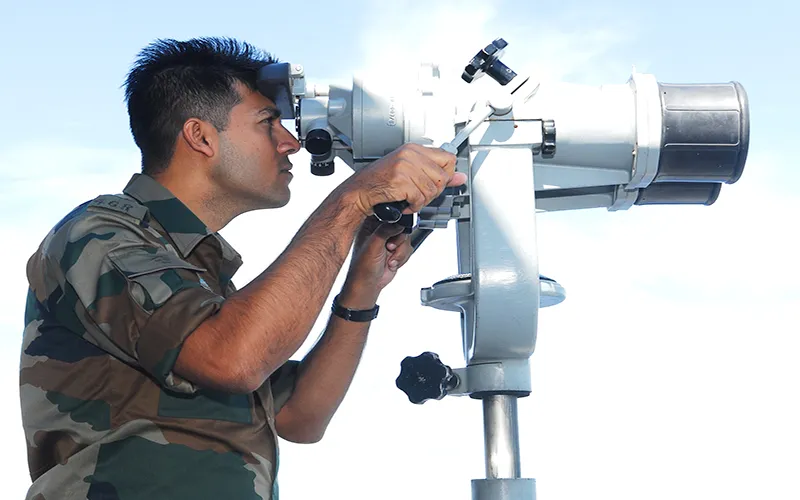-
CENTRES
Progammes & Centres
Location
Why is the Navy procuring three different helicopters to fulfil three ends of the same capability spectrum? The Navy would be better off with a single platform to leverage engine and systems commonality reducing costs in the form of maintenance, acquisition of spares and the training of pilots and maintenance crews.

The number of Indian companies vying for the naval light utility helicopter (LUH) contract looks promising. According to recent reports in the media, eight domestic firms have responded to the request for information (RFI) issued by the government a few months back. Promising as these numbers maybe, the contract is set to be another example of the Indian Navy continuing to access its performance and technical requirements in isolation. Does the Navy really need separate platforms for each and every capability requirement?
According to the RFI, the helicopter is meant to replace the outdated Chetak currently operated by the Navy. And more than 100 LUH units would be procured. These are expected to be capable of search and rescue (SAR), utility, limited maritime surveillance and targeting capabilities and are expected to be lightly armed. The government has also recently approved the purchase of 16 naval multi-role helicopters (MRH) in the form of the Sikorsky S-70B. These are expected to conduct anti-submarine, anti-surface warfare apart from the usual SAR and utility roles of all naval ship borne helicopters. If the roles and capabilities sound similar and overlapping, they are.
The Navy's rotary wing procurement plans intend to replace and build on each of its helicopter fleets namely the Chetak (LUH) and the Sea King (MRH). At the same time the Navy has also been procuring the indigenously built Hindustan Aeronautics built Dhruv to operate in the SAR and utility role and shallow water anti-submarine warfare. Why is the Navy procuring three different helicopters to fulfil three ends of the same capability spectrum? The Navy would be better off with a single platform to leverage engine and systems commonality reducing costs in the form of maintenance, acquisition of spares and the training of pilots and maintenance crews.
The Indian Navy's current shortage of helicopters is so acute that most war ships sail without their approved air component leaving them virtually blind against underwater threats. Sources indicate that last year the Indian Navy sent a Shivalik (Project 17)-class guided missile frigate the INS Sahyadri for the US hosted Rim of the Pacific (RIMPAC) multi-national maritime exercise with just one ageing Chetak helicopter. Leaving the ship blind underwater during its transit through Peoples Liberation Army Navy dominated waters of East Asia. While the Navy has been successful in getting the government to approve a slew of warship building projects at exorbitant sums, it has failed to acquire approval for an adequate multi-role ship borne helicopters. Reports indicate that the availability of helicopters for ships is at a measly 20 percent of the requirement. If one were to do that math and count the number of ships that the Navy operates and is expecting to induct in the coming year and the number of helicopters it operates and hopes to induct, the situation looks very bleak.
It is a similar story if one were to analyse the Navy's requirement of nine medium range maritime reconnaissance (MRMR) aircraft. It is looking to procure an aircraft which can fly a transit of 400 nautical miles at 300 knots and patrol 400 nautical miles for four hours at a height of 10,000 feet, configured with two missiles with a range of about 50 nautical miles according to a request for proposal issued in 2013. Requirements the Navy has come to discover, can be met with the existing capabilities of the Boeing P-8I. Acquiring more Boeing P-8I which is based on the commercially operated Boeing 737 will help the Navy not only leverage an easily available logistics chain worldwide, but also reduce the cost-inefficiency and operationally challenging task of operating different aircraft for the same task. Plus it already has numerous Dornier 228 aircraft configured to conduct maritime reconnaissance at shorter ranges and lower altitudes.
The future acquisition of the Japanese built Shinmaywa US-2 amphibious aircraft is another example of the Navy indulging in a piecemeal expensive acquisition for capabilities so specific; one wonders if the Navy has ever been regularly tasked with operations that require such capabilities. Land combat troops on remote islands in the Andaman & Nicobar Islands with fixed winged aircraft? Deliver spares and personnel to ships at sea via fixed winged aircraft? The Navy would do well to use this $ 1.3 billion in acquiring aviation assets in areas where it faces more critical shortages given its budgetary constraints.
While it is up to the government to take cognizance of critical shortages in the military and to choose to address them, the Navy must take note of the government's spending capabilities given the economic climate and plan and prioritize acquisitions accordingly. Improving affordability in areas of acquisition, maintenance and training must receive primacy in the naval planning. The Navy needs to urgently adopt an approach of acquisition where it receives the greatest returns on its investments, closing its capability gaps.
(The writer is a Research Intern at Observer Research Foundation, Delhi)
The views expressed above belong to the author(s). ORF research and analyses now available on Telegram! Click here to access our curated content — blogs, longforms and interviews.

Pushan was Head of Forums at ORF. He was also the coordinator of Raisina Dialogue. His research interests are Indian foreign and security policies.
Read More +